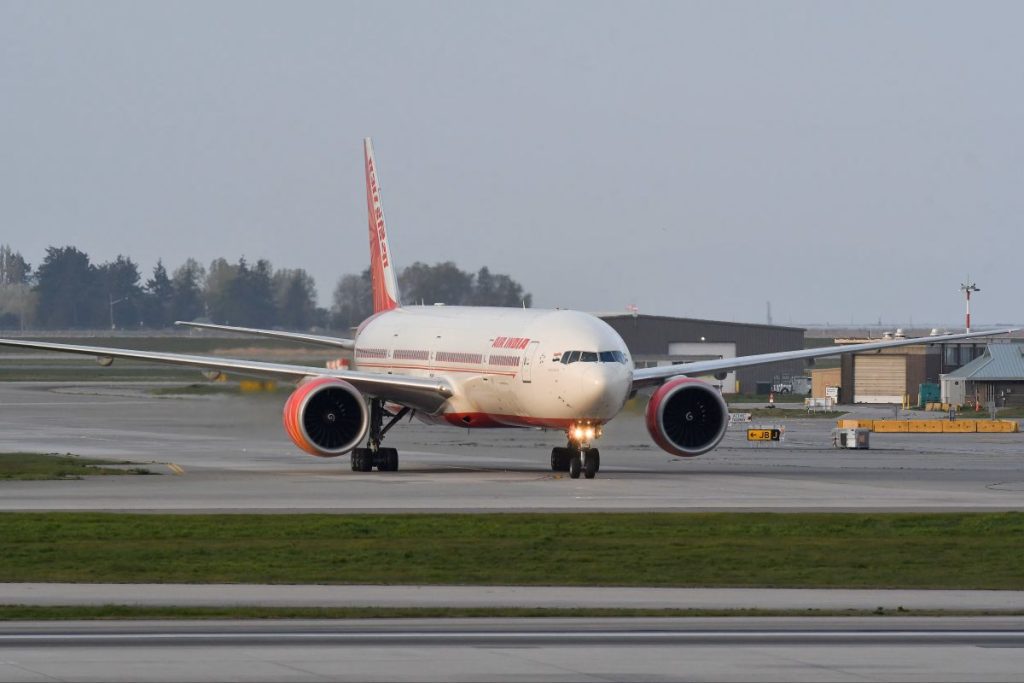New Delhi, June 19, 2025 — In a major development that’s making headlines across the aviation industry, Air India has announced a sharp 15% cut in international services operated by widebody aircraft, following a taxiway collision between two of its planes at Delhi’s Indira Gandhi International Airport.
The collision, which took place on June 17, involved two Boeing 777 aircraft — one arriving from London and the other preparing for departure to Newark. Though there were no injuries, the incident caused significant damage to both aircraft and has triggered a full-scale probe by India’s aviation regulator, the Directorate General of Civil Aviation (DGCA).
Air India Collision at Delhi Airport: What Went Wrong?
According to preliminary findings, the incident occurred around 5:30 AM IST on a busy taxiway near Terminal 3. The arriving flight from London Heathrow (LHR) was taxiing toward its gate when it clipped wings with another Air India Boeing 777 scheduled to fly to Newark Liberty International Airport (EWR).
Images and videos circulating on social media show visible damage to the wingtip of one aircraft and the fuselage of the other. The DGCA has already seized the Flight Data Recorder (FDR) and Cockpit Voice Recorder (CVR) for forensic analysis.
This incident is being taken with the utmost seriousness. Preliminary indications point to procedural lapses,” said a senior DGCA official.
Source: NDTV News
Immediate Fallout: Flight Cuts and Operational Constraints
In response to the incident, Air India, a key member of the Star Alliance network, has temporarily reduced widebody international operations by 15%. The airline confirmed that several scheduled flights have either been cancelled or merged with alternate services, particularly on North American and European routes.
Key Affected Routes:
- Delhi to New York (JFK)
- Mumbai to Toronto (YYZ)
- Delhi to Chicago (ORD)
- Bengaluru to London (LHR)
An Air India spokesperson issued a statement saying:
“This reduction is necessary to ensure adequate fleet availability, safety inspections, and crew readjustments. We apologize for the inconvenience caused to our passengers.”
Passenger Disruptions: Refunds, Rebookings, and Delays
The reduction in services has led to widespread disruptions for international travelers. Several passengers reported being informed about cancellations just hours before departure, resulting in missed connections and forced rebookings.
Affected passengers are being offered:
- Full refunds for cancelled flights.
- Alternative routing through code-share partners like Lufthansa and Singapore Airlines.
- Complimentary hotel stays in some cases of overnight delay.
However, many took to social media platforms such as X (formerly Twitter) and Instagram to complain about inadequate customer service, long wait times on helplines, and lack of clarity from ground staff.
“Air India’s communication during this crisis has been shockingly poor,” tweeted a passenger stranded at Frankfurt Airport.
DGCA Orders Safety Audit of Air India
The DGCA has taken swift regulatory action by ordering a comprehensive safety audit of Air India’s international operations, including:
- Ground movement protocols
- Crew training modules
- Air Traffic Control (ATC) coordination practices
This comes amid growing concern over the increase in near-miss incidents involving Indian carriers. Aviation experts have highlighted systemic issues such as crew fatigue, airport congestion, and inadequate ground surveillance systems.
“This is a wake-up call for both the airline and India’s aviation ecosystem,” said Captain Mohan Reddy, former DGCA flight inspector.
The Role of Widebody Aircraft in Air India’s Global Strategy
Widebody jets — particularly the Boeing 777, Boeing 787 Dreamliner, and the recently inducted Airbus A350 — are the backbone of Air India’s international expansion plans under the Tata Group.
Since acquiring the airline in 2022, Tata has been working aggressively to modernize the fleet, improve customer service, and position Air India as a world-class carrier competing with global giants like Emirates, Qatar Airways, and British Airways.
However, the current reduction in widebody aircraft deployment may delay those ambitions, as the airline temporarily shifts focus to fleet maintenance and compliance.
Experts Call for Cultural Shift in Aviation Safety
Industry veterans and former airline executives argue that the collision is symptomatic of deeper problems in India’s aviation industry — not merely a one-off operational failure.
Key concerns raised include:
- Over-reliance on manual taxi operations at major airports.
- Inadequate simulation training for ground emergencies.
- Poor coordination between cockpit crew and ATC.
“Until Indian aviation shifts its culture to one of proactive risk mitigation, such incidents will keep recurring,” said Aarav Kapoor, aviation safety consultant and former airline captain.
Read Also: Air India Flight AI 171 Crash: Investigators Hunt Clues After Doomed Dreamliner’s Deadly Descent
Aviation Sector Growth and Infrastructure Gaps
India’s aviation sector is one of the fastest-growing in the world, with passenger traffic exceeding pre-COVID levels in 2025. Yet, this growth has outpaced improvements in airport infrastructure, staff training, and technology upgrades.
Delhi, Mumbai, and Bengaluru airports are already operating at or near full capacity, leading to congested taxiways, limited runways, and frequent delays.
“The time has come for India to invest not just in more airports, but in smarter, safer air traffic systems,” said a report by the Centre for Asia Pacific Aviation (CAPA India).
What’s Next for Air India?
As the DGCA investigation continues, Air India is expected to:
- Reintroduce suspended routes in phases after comprehensive internal reviews.
- Conduct safety refresher training for all flight and ground crew.
- Roll out a new standard operating manual aligned with global best practices.
Meanwhile, the airline is urging passengers to:
- Monitor their flight status closely via airindia.com.
- Opt for travel insurance to mitigate last-minute changes.
- Contact Air India’s 24×7 helpline for real-time updates and assistance.
Final Word: Time for Accountability and Reform
The Air India Delhi crash is more than just an operational mishap — it’s a critical test of India’s aviation governance, corporate responsibility, and public safety commitment. As the country aims to become a global aviation hub, the need for robust oversight, better infrastructure, and a culture of accountability has never been more urgent.
Read Also: Nightmare for Air India Dreamliner: Five International Flights Cancelled
